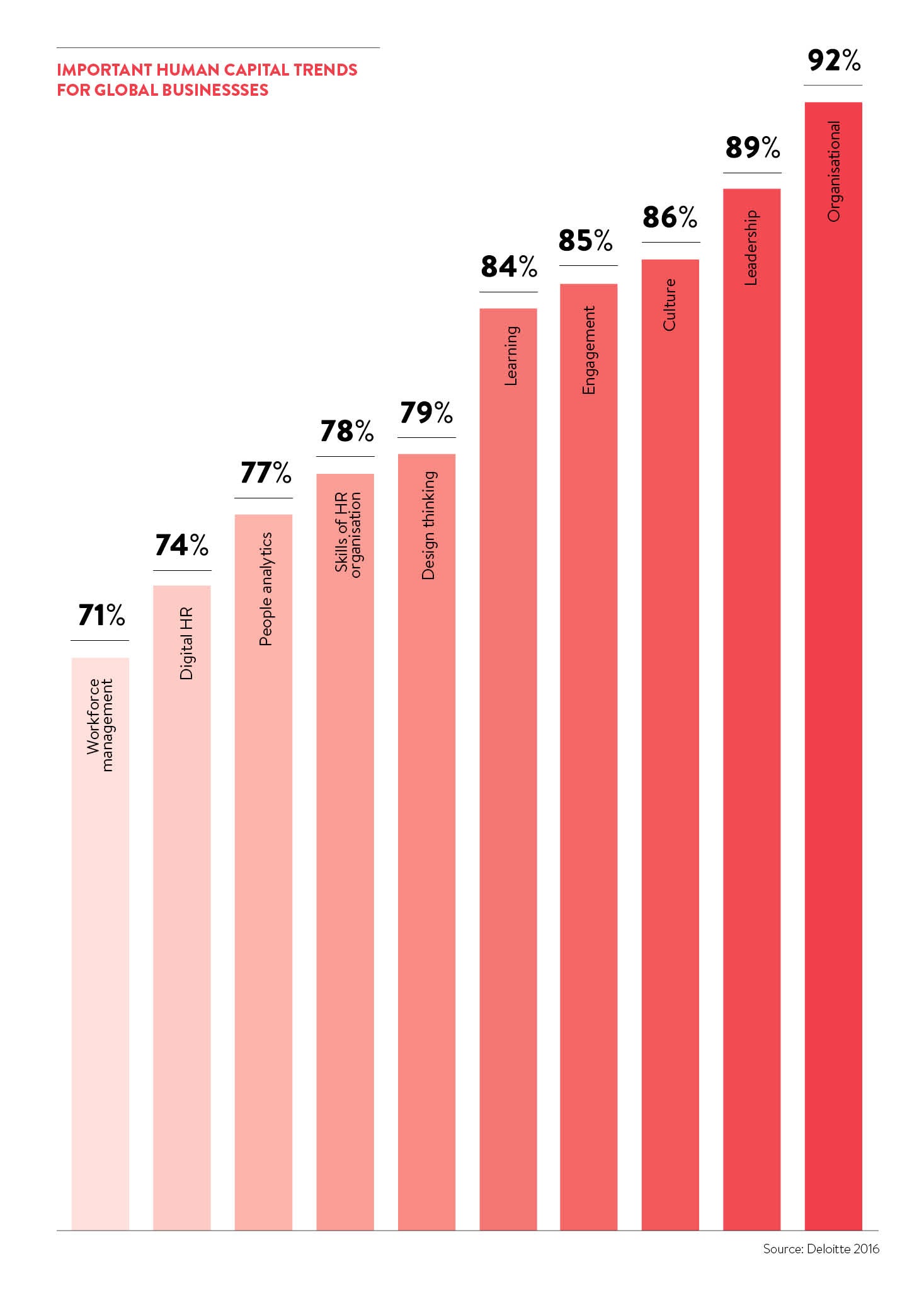Disruptive changes in digital technologies, business models and workforce demographics are rocking the foundations of organisations around the world. To survive and thrive in the new digital world of work, companies now need to change fundamentally the way they are structured.
Those are the findings of our new Deloitte Global Human Capital Trends 2016 study. Unveiled this month, it is one of the largest-ever studies of talent challenges in business. More than 7,000 companies from more than 100 countries took the time to answer survey and the findings were striking. While nearly every talent challenge from last year became more acute, the number-one topic on people’s minds is how do I organise my company effectively to meet the digital demands of today?
Smaller teams
Responding to the technology and business disruptions, 92 per cent of companies surveyed told us that their organisation structure wasn’t working. Today only 34 per cent of respondents from large organisations are organised by function – sales, marketing, finance, engineering – and more than half have multiple forms of product, geographic or market-facing structures, according to the study.
Companies are shifting rapidly from top-down hierarchies to networks of teams where people work in smaller groups
Our conclusion, after nearly a year of research and dozens of interviews, is that companies are shifting rapidly from top-down hierarchies to networks of teams where people work in smaller groups, dedicated to a local mission, bound through culture, leadership, shared values, and transparent goals and information.
This organisational shift, which we see happening in every industry from retail to healthcare to technology, is forcing human resources and business leaders to rethink how we lead and reward people, redesign the careers models we offer, and focus on building a meaningful and cohesive culture that drives communication, alignment and engagement.

[embed_related]
Culture-first
Last month I met with representatives from two of the fastest growing companies in the world, one a six-year-old multi-billion-dollar unicorn and the other a 20-year-old well-established consumer technology company. Both told me that their number-one chief executive-driven issue is culture – how can they build an exciting, collaborative and unique culture that helps us tie together the rapidly growing teams we are empowering around the world?
This issue of organisation design is not a new topic. Companies have been building org charts, and doing spans and layers analysis for years. But traditional thinking no longer applies: our research shows that people do not have the patience to traverse the pyramid anymore; decision-making in the hierarchy is too slow; and digital tools let us communicate in real time from team to team. We as people thrive in small-group environments, as long as the company promotes inclusion, shared values and holds us accountable for our goals.
New leadership models
The number-two issue this year is building a new pipeline of leaders, which 57 per cent of companies rated as urgent. It’s clear that a new model of leadership is needed, one that rewards leaders who create followers, people who operate across many teams effectively, and leaders who know how to drive innovation, dynamically move people where needed and inspire others to rally around a common mission. These leaders are often stifled in the old hierarchy, held back by senior people who hold their status because of their job title or position.
The way we build leaders, how we develop people, and how we measure and drive culture is going to have to change. Our research shows that all these softer people issues have now become hard and, among these 7,000 companies, an amazingly large number believe they are business-critical.
 The research also shows other exciting developments; people analytics, the process of using data to make better management decisions, is growing rapidly. This year more than 30 per cent of the companies we surveyed are building predictive models of behaviour and the maturity of organisations doing people analytics almost doubled. Radical changes are also taking place in the world of always-on learning, as companies embrace MOOCs (massive open online courses) and other forms of video-learning like never before.
The research also shows other exciting developments; people analytics, the process of using data to make better management decisions, is growing rapidly. This year more than 30 per cent of the companies we surveyed are building predictive models of behaviour and the maturity of organisations doing people analytics almost doubled. Radical changes are also taking place in the world of always-on learning, as companies embrace MOOCs (massive open online courses) and other forms of video-learning like never before.
The world of human resource management is going through rapid change. Disciplines including design-thinking, real-time feedback and engagement systems, and the new world of behavioural economics are transforming our organisations so they can flourish in this new digital age.
The digital world of work clearly is here. Watch for these trends – they have the potential to shake the foundation of your company in exciting and positive ways.
Smaller teams






